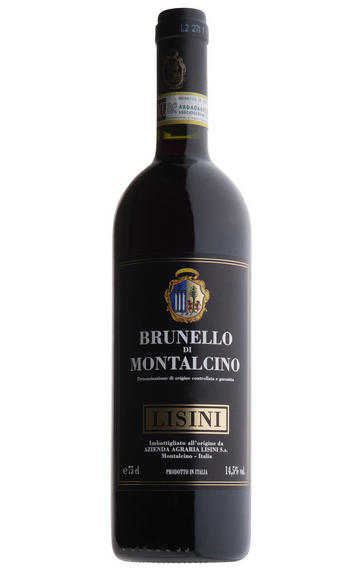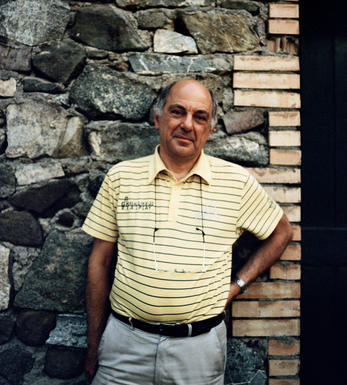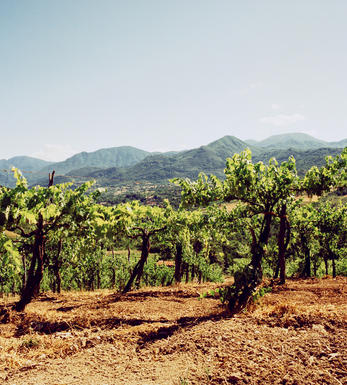
2018 Brunello di Montalcino, Lisini, Tuscany, Italy

Critics reviews
Like a kid in a candy store, taking in the confectionary spices, medicinal cherry, blueberry compote, and liquorice aromas of the 2018 Brunello di Montalcino is a total pleasure. While silky and elegant, this is also racy and with depths of character, as red and black berries are complicated by notes of cinnamon, clove and a bitter dusting of cocoa. The 2018 finishes potent and long but only lightly structured, begging for some cellaring but also placing all of its goods on display. Nearly a minute goes by, and nuances of violet pastille and hard red candies still echo throughout.
Drink 2025 - 2030
Eric Guido, Vinous.com (December 2022)
Deep, lustrous ruby with orange tinges. Very closed and backward on the nose. Cherry with the merest suggestion of dried fruit on the palate, but much more compelling than it sounds. Long yet still subdued on the finish and
Drink 2024 - 2034
Walter Speller, Jancisrobinson.com (December 2022)
Near Sant'Angelo in Colle, on the road that leads to Castelnuovo dell’Abate, Lisini is within the zone of Sesta. The estate preference is to pick quite late, and they are one of the last in the area to harvest. The relative ripeness and concentration is evident in 2018 but not at the expense of balance. In fact, Lisini’s Brunello is one of the vintage’s more exciting and profound wines. It opens slowly with hints of chestnut and smoke, then discloses dark cherry, iron and fragrant moist soil. Tannins are tightly stitched yet malleable, giving a satisfying mouthful. Finishes with a salty tang and mineral drive.
Drink 2024 - 2036
Michaela Morris, Decanter.com (November 2022)
About this WINE

Lisini, Tuscany
The history of Lisini dates to the time of the Medicis. This is one of Montalcino’s oldest estates, and a founding member of the Corsorzio del Vino Brunello di Montalcino. Lisini is one of the few producers in Sant’Angelo in Colle, in the south-west of Montalcino.
The proximity here to Maremma gives maritime breezes warding against summer heat, which is especially important in as hot and dry a year as 2017. Thick woodland, olive groves and wild scrubs surround the 25 hectares under vine – a rural haven of the region’s finest terroir. An ancient river system sculpted the area, and with it the complex soils in Lisini’s vineyards. Fossil laced sand, clay and iron-rich soils, paired with altitudes of 300-400 metres, all play a leading role in the unique personality of Lisini’s wines.

Brunello di Montalcino
Along with Chianti, Brunello di Montalcino is Tuscany's most famous DOCG and the region's boldest expression of Sangiovese. Located 30 miles south of Siena with the hilltop town of Montalcino as its epicentre, its 2,000 hectares of vines are naturally delimited by the Orcia, Asso and Ombrone valleys. Brunello is the local name for the Sangiovese Grosso clone from which Brunello di Montalcino should be made in purezza (ie 100 percent).
The Brunello di Montalcino DOCG has a whale-like shape: at its head, at 661 metres above sea level on ancient, stony galestro soils facing east and southeast lies the town of Montalcino, where the DOC was founded. As you follow the spine south towards the tail, the vineyards lose altitude – those around Colle Sant'Angelo are at 250 metres – while the soils become richer with iron and clay. Further east, in the shadow of the 1,734 metre Mont'Amiata lies the village of Castelnuovo dell'Abate where the vineyards are strewn with a rich mix of galestro, granitic, volcanic, clay and schist soil types.
Historically, the zone is one of Tuscany's youngest. First praised in 1550 by Leandro Alberti for the quality of its wines, it was Tenuta Il Greppo who bottled the inaugural Brunello di Montalcino in 1888. By 1929, the region had 925 hectares of vines and 1,243 hectares of mixed crops, while in 1932 it was decreed that only those wines made and bottled within the commune could be labelled as Brunello di Montalcino. Since then, the number of producers has risen from 11 in 1960 to 230 in 2006, while over the same period the vineyards have expanded from 1,000 hectares to 12,000. The region earned its DOC in 1966, and was upgraded to DOCG in 1980.
Brunello di Montalcino cannot be released for sale until five years after the harvest, or six years in the case of Brunello di Montalcino Riserva. During this time the wines should be aged for at least two years in oak, followed by at least four months in bottle (six months for Riservas); maximum yields are 55 hl/ha.
Rosso di Montalcino is declassified Brunello di Montalcino, released for sale 18 months after the harvest.
Recommended producers: Costanti, Fuligni, Lisini, San Giuseppe, Soldera, Cerbaiona

Sangiovese
A black grape widely grown in Central Italy and the main component of Chianti and Vino Nobile di Montepulciano as well as being the sole permitted grape for the famed Brunello di Montalcino.
It is a high yielding, late ripening grape that performs best on well-drained calcareous soils on south-facing hillsides. For years it was blighted by poor clonal selection and massive overcropping - however since the 1980s the quality of Sangiovese-based wines has rocketed upwards and they are now some of the most sought after in the world.
It produces wines with pronounced tannins and acidity, though not always with great depth of colour, and its character can vary from farmyard/leather nuances through to essence of red cherries and plums. In the 1960s the advent of Super Tuscans saw bottlings of 100% Sangiovese wines, as well as the introduction of Sangiovese/Cabernet Sauvignon blends, the most famous being Tignanello.


Buying options
Add to wishlist
Description
Lisini’s traditional practices are laid bare by the transparency of the 2018 vintage. 45 days of maceration and fermentation on skins infuses complexity and structure, followed by 42 months in old neutral, Slovenian oak. This is a sprung celebration of Sangiovese, full of joy and life.
The nose reminiscent of Pinot-like high notes: glassy cherry, herbs and dried flowers. The palate is light, so pure and utterly harmonious: cherrystone, red peach, blood orange, chinotto, bay leaf with salt flecked edges. Tannins present in all the right places, this has a firm minerality and is very memorable.
Drink 2024 - 2034
Berry Bros. & Rudd
wine at a glance
Delivery and quality guarantee